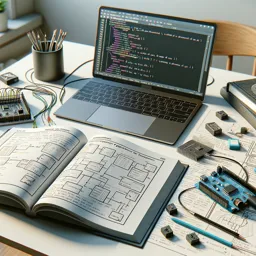Tkinter is a powerful built-in Python library for building desktop graphical user interfaces (GUIs). While it provides a robust set of widgets and tools for application development, many developers seek ways to make their interfaces visually appealing and consistent with modern design standards. In this article, we will explore how you can customize the appearance and behavior of your Tkinter applications, transforming default widgets into a polished and attractive user experience.
Understanding Tkinter’s Default Appearance
When you create a simple Tkinter application, the default styles of widgets are often basic and utilitarian. They are designed with cross-platform consistency in mind but may not always align with the branding or aesthetic goals of your project.
Styling with ttk Widgets
Tkinter’s themed widget set, imported as ttk, provides enhanced styling options over standard Tkinter widgets. ttkwidgets include buttons, labels, entries, frames, and more, all with theme support.
- Switch to
ttkwidgets to take advantage of system-native appearance and advanced styling. - Use
ttk.Style()to apply and change themes globally. - Use the available theme names:
clam,alt,default,classic, and others depending on your system.
import tkinter as tk
from tkinter import ttk
root = tk.Tk()
style = ttk.Style()
style.theme_use('clam')
btn = ttk.Button(root, text='Styled Button')
btn.pack(pady=10)
root.mainloop()
import tkinter as tk
from tkinter import ttk
root = tk.Tk()
style = ttk.Style()
style.theme_use('clam')
btn = ttk.Button(root, text='Styled Button')
btn.pack(pady=10)
root.mainloop()Advanced Widget Customization
Beyond changing themes, Tkinter allows for deeper customization:
- Colors and Fonts: Set custom colors and fonts for widgets using the
configuremethod or widget options. - Padding and Borders: Adjust the layout and separation of widgets for a cleaner design.
- Custom Styles: With
ttk.Style(), define unique styles for individual widgets or widget types.
style.configure('TButton', foreground='white', background='#007ACC', font=('Helvetica', 12, 'bold'))Using Images and Icons
Enhance the interface with meaningful visuals:
- Add images to buttons, labels, and menus using the
PhotoImageclass. - Use PNG, GIF, or other compatible image formats, keeping in mind the application size and performance.
img = tk.PhotoImage(file='icon.png')
btn = ttk.Button(root, image=img, text='With Icon', compound='left')Creating Custom Widgets
For unique requirements, you can create custom widgets by subclassing tk.Widget or modifying behavior through event bindings and canvas drawing.
- Draw interactive shapes and controls with the
Canvaswidget. - Create reusable, parameterized widget classes for complex UI elements.
Tips for a Modern Tkinter UI
- Keep layouts responsive by using the
gridandpackgeometry managers efficiently. - Use spacing, padding, and consistent color schemes for a professional look.
- Test your interface on different platforms to ensure a consistent appearance.
Conclusion
With thoughtful use of Tkinter’s customization capabilities, you can design Python desktop applications that are attractive, user-friendly, and aligned with your project’s visual identity. Explore ttk themes, create your own styles, and combine images and custom widgets to produce compelling GUIs for any Python project.

































